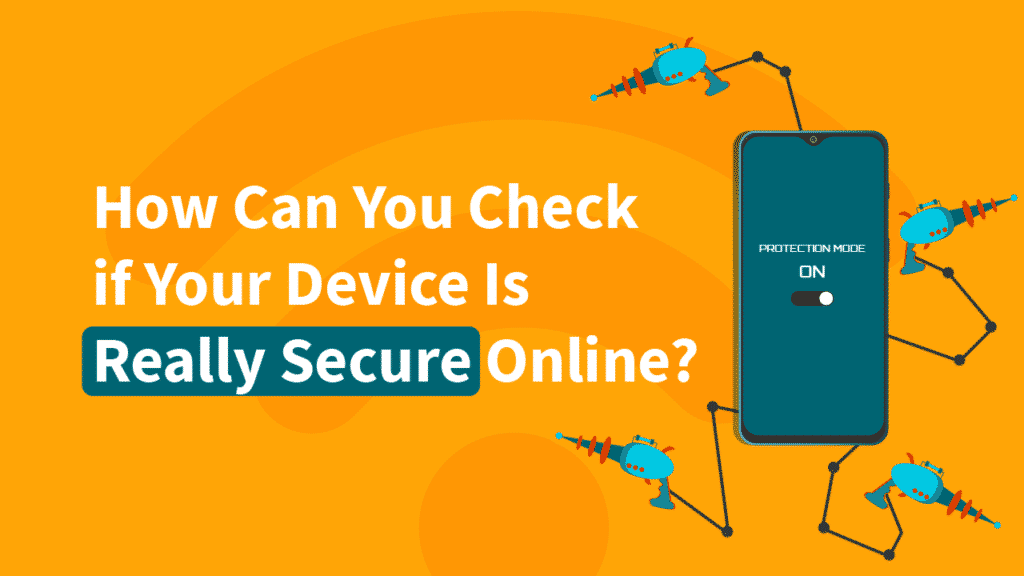How Can You Check If Your Device is Really Secure Online?
Hackers and cybercriminals often try to break into devices and online accounts to gather data and use it for unethical purposes. Due to this, people use various methods and tools to secure their computers and mobile devices online. However, cybercriminals devise new strategies regularly to perform their acts.
Even though you have installed security software to keep your device safe, it is essential to run security checks from time to time to ensure your device is still genuinely secure. In this article, we’ll look at ways to check if your device is really secure online.
1. Check If Your Antivirus is Up to Date
Using antivirus software is highly important when trying to keep your device safe. However, just installing antivirus software isn’t enough. You have to check for updates or enable automatic updates periodically. If your antivirus is not up to date, then your device might be at risk.
Most modern antivirus software use a behavior-based detection system to detect and stop malware the antivirus hasn’t encountered before. However, some antivirus utilities still use malware signature systems, a type of digital footprint, to detect and prevent easily detectable and known threats.
To check if your device is secure, open the antivirus and check if there is a message asking you to update it. Your antivirus must always be up to date to block any type of malware. Also, you can check if a newer version of the product is available.
2. How Strong is Your Antivirus Software?
For your device to be secure online, you should look at the security products you have installed on your computer. Is your antivirus product a free software you downloaded after an advertisement? Or did you run a check to make sure it offers strong protection against various types of malware? The answer goes a long way in determining if your device is secure or not.
Read the full details about your antivirus product to know what kind of protection you are getting. Better still, some websites offer free reviews for security products such as antiviruses. You can visit one to view your antivirus’ online protection. If the results show that the product does not offer full protection or has some security flaws, your device might be at risk.
3. Test Your Firewall
A firewall is one of the most fundamental security setups. Operating systems like Mac and Windows have built-in firewalls that offer decent protection. Other third-party security programs also include firewalls with varying degrees of protection. Your device’s firewall is essential in blocking hackers and security threats from your device. For your device to be secure, it must have a strong firewall.
A firewall will keep your device hidden from cybercriminals on a network. If your device is discoverable, the firewall prevents access. You can test how secure your firewall is through a port test service. If your port settings are wrong or if a virus has changed it, then your device is vulnerable to cyberattacks. Through a reliable port test service, you can scan to check if your computer is invisible online.
4. Review Your Passwords
Before reviewing your passwords, you should view all your passwords at a glance. Do your passwords consist of information like your birthday, dog’s name, or child’s name? If yes, then your device is undoubtedly at risk. If you use the same password on all your accounts, then your device is also at risk. If you’re guilty of this, then the first step is to change your passwords and use a password manager.
Additionally, you can still test how reliable your password manager is to know if your device is secure. Most password managers give reports on password strength. If your passwords come up in a list of weak or duplicate passwords, you will need to change them. Some password managers give a full list of passwords and will allow you to sort the passwords by their strength.
5. Check Your Browser Plug-ins
Your browser has a lot to do with the internet space, and so also puts you at a security risk online. Before checking your browser plug-ins, check if your browser app is up to date; if it’s not, your device is vulnerable to attacks. Like an old browser, outdated plug-ins also leave your device vulnerable. To check if the plug-ins are up to date, open the Mozilla Plugin Checker. It will display the plug-ins on the browser and whether they are up to date. This tool works for Chrome, Internet Explorer, and other browsers. See a list of secure web browsers here.
Conclusion
Setting up security and privacy tools shouldn’t be the only thing you do to keep your device secure. It is crucial to run a frequent review of your device’s security settings and the applications you have installed. The tips we have given above are good ways to check if your device is really secure.
